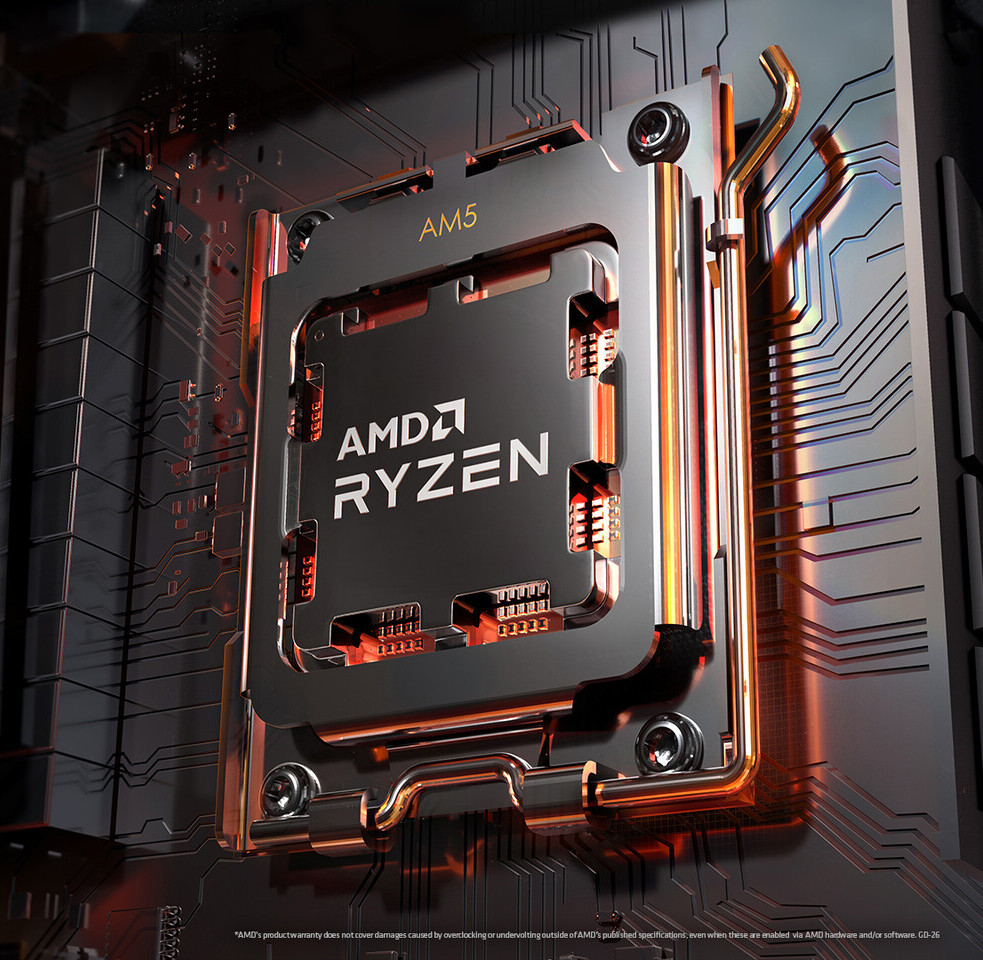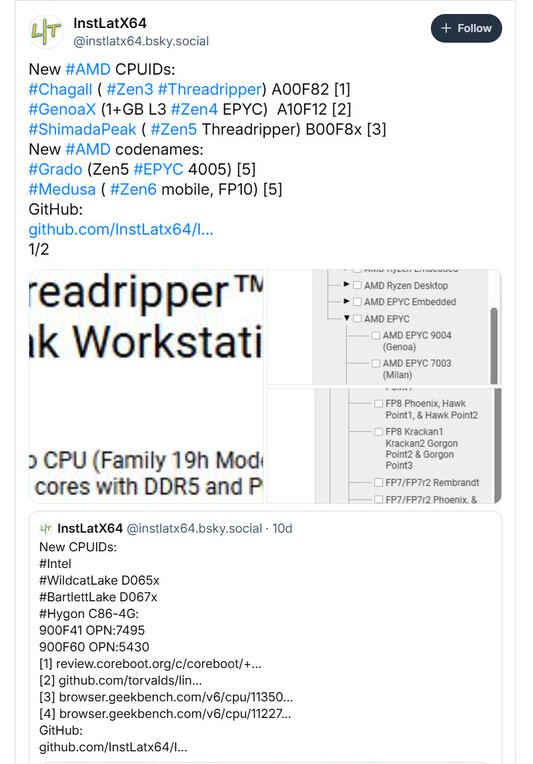PC hardware enthusiasts are eagerly scouring official AMD repositories and related databases in search of upcoming next-generation technologies. Olrak29 and InstLatX64 have shared their latest discoveries related to Team Red, spanning across desktop, mobile, and workstation product lines. According to VideoCardz, some of these upcoming technologies are already somewhat known, such as the rumored Zen 5-based Ryzen Threadripper "Shimada Peak" 9000WX processor series, expected to be officially introduced at Computex 2025 after almost two years of leaks.
The Ryzen 9000G "Gorgon Point" desktop APU series, rumored to feature Zen 5 and RDNA 3.5 architectures, has resurfaced and is now said to be fully compatible with the AM5 socket platform. Additionally, a new lineup of AM5-bound "Grado" chips, potentially based on existing "Granite Ridge" foundations but aimed at commercial and enterprise levels, has been uncovered. These chips, speculated to be basic/entry-level "EPYC 4005" processors, are seen as successors to the current 4004 models related to the Ryzen 7000 "Raphael" architecture.
Olrak29 and InstLatX64 have also discovered several mysterious FP8 socket-related Ryzen AI Mobile SoCs. "Krackan2" is speculated to be a more affordable version of the current "Krackan Point" APUs, possibly featuring smaller designs with fewer cores and no NPUs. Kepler_L2 has provided insights on the three listed "Gorgon Point" IPs, suggesting that the third variant ("Gorgon Point3") could be a spin-off or refresh of the "Krackan2" design. Insider information hints at "Gorgon Point" being the successor to "Strix Point."
Furthermore, an FF5-based "Soundwave" processor design has been revealed alongside the futuristic Ryzen AI Mobile chipsets. Industry rumors suggest that AMD may be incorporating Arm architecture into a lower-tier product. InstLatX64 has extracted additional information from AMD's Technical Information Portal, shedding light on the development of Ryzen AI "Medusa Point" APUs featuring Zen 6 and RDNA 3.5 architectures, along with a corresponding "larger footprint" FP10 platform.


